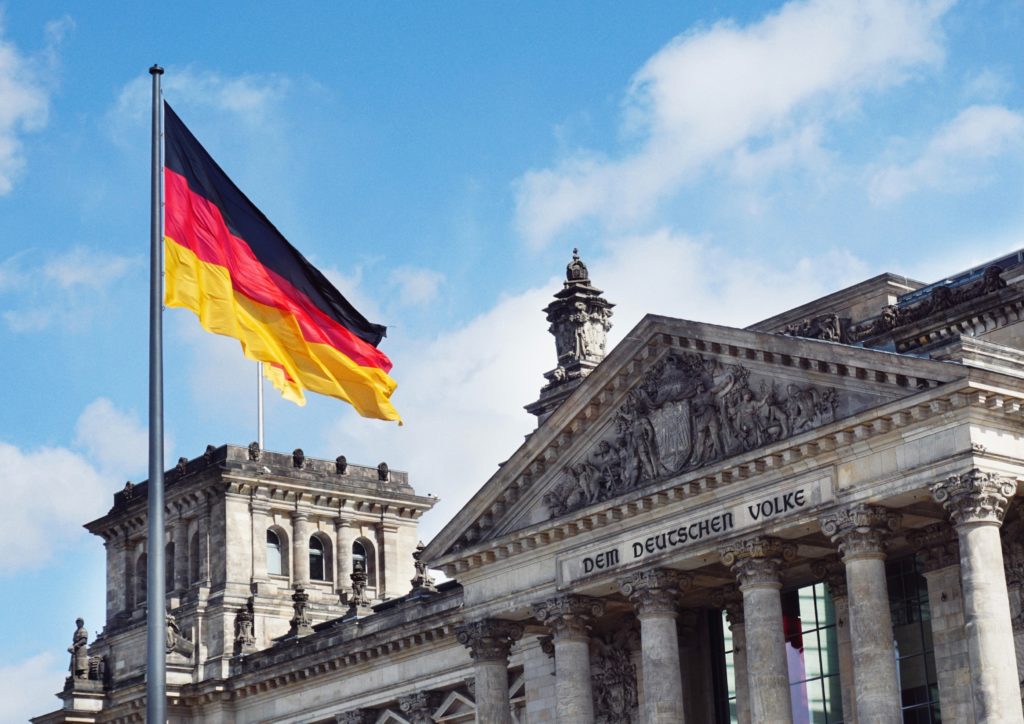Climate change in Germany is leading to long-term impacts on agriculture, more intense heatwaves and cold waves, flash and coastal flooding, and reduced water availability. Debates over how to address these long-term challenges caused by climate change and global warming have also sparked changes in the energy sector and in mitigation strategies.
Renewable Energy
Despite massive investments in renewable energy, Germany has struggled to reduce coal production and consumption. In 2018, coal accounted for 38% of Germany’s electricity generation. The use of lignite, a particularly dirty type of coal, accounted for almost a quarter of electricity generation. In order to phase out coal-fired power plants, the German government has proposed a plan that would see Plants shuttered by 2038. The plan is currently being debated in the parliament.
Energy Transition
Germany’s energiewende (energy transition) has been a significant political issue in German politics. Major elements in the government has been reluctant to phase out coal completely, as it would mean job losses in coal-mining regions. However, some members have called for a more ambitious timeline for coal plant closures.
Climate Change Mitigation Strategies
The German government has adopted several mitigation strategies in an attempt to reduce emissions and slow the effects of climate change. One such strategy is the introduction of a carbon pricing system, which would put a price on carbon emissions. The revenue generated by the carbon tax would be used to fund investments in renewable energy and energy efficiency.
Carbon Tax
The German government has been debating the introduction of a carbon tax for several years. The tax would put a price on carbon emissions, with the revenue generated used to fund investments in renewable energy and energy efficiency.
Greenhouse Gases
The German government has also set a target of reducing greenhouse gas emissions by 80-95% below 1990 levels by 2050. In order to achieve this goal, Germany has implemented a number of policies, including:
- Increasing the use of renewable energy
- Encouraging energy efficiency
- Promoting electric vehicles
- Reducing deforestation
Carbon Credits
In addition to domestic mitigation strategies, the German government has also purchase carbon credits from other countries in an attempt to offset its own emissions.
Climate Change in Berlin

Climate change is already having an impact on the German capital, Berlin. The city has experienced more extreme weather events in recent years, including heat waves, heavy rains, and flooding. In response to these changes, the Berlin city government has adopted a number of adaptation strategies, including:
- Improving the drainage system
- Planting more trees
- Constructing green roofs
- Building flood-proof buildings
- Raising awareness about climate change
Despite these mitigation and adaptation strategies, climate change is expected to have significant impacts on Berlin in the future, including:
- More extreme weather events
- Rising sea levels
- Increased heat waves
- Changes in precipitation patterns
Affects of Climate Change on Agriculture
Agriculture in Germany is already being affected by climate change. The main impacts of climate change on agriculture are ,ore extreme weather events, which can damage crops and livestock, changes in precipitation patterns, which can impact crop yields. Rising temperatures, can lead to increased pest and disease pressure.
A changing climate also has implications for the types of crops that can be grown in Germany. For example, warmer temperatures are likely to allow for the cultivation of new crops, such as olives and almonds. The domestic wine industry has been negatively impacted by climate change, as grapevines require a certain amount of chill hours in order to produce high-quality grapes.
In response to the changing climate, the German government has created a number of programs to support farmers, including:
- The National Action Plan on Climate Change and Agriculture
- The National Strategy for Adaptation to Climate Change
- The Programme for Action on Agro-Ecology
These programs aim to help farmers adapt to the changing climate and reduce their emissions.
Impacts of Climate Change on Wildlife
Climate change is also having an impact on Germany’s wildlife. Some species are thriving in the changing conditions, while others are struggling. For example, warmer temperatures and changes in precipitation have expanded the range of many insect species, including mosquitoes and ticks. These insects can carry diseases, which can pose a threat to human health.
On the other hand, many cold-blooded animals, such as reptiles and amphibians, are struggling in the face of climate change in Germany. Warmer temperatures are causing these animals to overheat and stressing them out. As a result, many species are experiencing population declines.
In order to protect Germany’s wildlife, the government has created a number of nature reserves and national parks. These protected areas provide a refuge for struggling species and help to ensure the long-term survival of Germany’s wildlife.
Climate Change in the European Union

In the European Union (EU), climate change has been identified as one of the biggest challenges facing the bloc. The EU has set a target of reducing greenhouse gas emissions by at least 40% below 1990 levels by 2030. In order to meet this target, the EU has implemented a number of policies, including:
- The Emissions Trading System
- The Renewable Energy Directive
- The Energy Efficiency Directive
- The Fuel Quality Directive
These policies have had some success in reducing emissions, but more needs to be done in order to meet the EU’s climate targets.
EU Climate Targets
The European Union has set a number of climate targets for 2030, including:
- Reducing greenhouse gas emissions by at least 40% below 1990 levels
- Increasing the share of renewable energy to at least 27% of the EU’s total energy consumption
- Improving energy efficiency by at least 27%
These targets are ambitious, but they are necessary in order to avoid the worst impacts of climate change in Germany and in the European Union.
Germany is a world leader in mitigating and adapting to climate change, but there is still more work to be done. The country has made significant progress in reducing emissions, but it needs to do more to meet its climate targets. In addition, Germany must continue to adapt to the impacts of climate change that are already being felt in the country.
Emissions Trading System
The Emissions Trading System (ETS) is the EU’s main tool for reducing greenhouse gas emissions. The ETS puts a price on carbon emissions, with the goal of incentivizing companies to reduce their emissions.
Renewable Energy Directive
The Renewable Energy Directive (RED) requires that member states source at least 20% of their energy from renewable sources by 2020 in order to tackle climate change in Germany. The directive also sets targets for individual member states, based on their different starting points and circumstances.
Energy Efficiency Directive
The Energy Efficiency Directive (EED) requires member states to improve their energy efficiency by 1.5% every year between 2014 and 2020. The directive also contains provisions for promoting energy efficiency in buildings, appliances, and transport.
Fuel Quality Directive
The Fuel Quality Directive (FQD) sets standards for the quality of transportation fuels. The directive requires a 6% reduction in the carbon intensity of transportation fuels by 2020, compared to 2010 levels.

